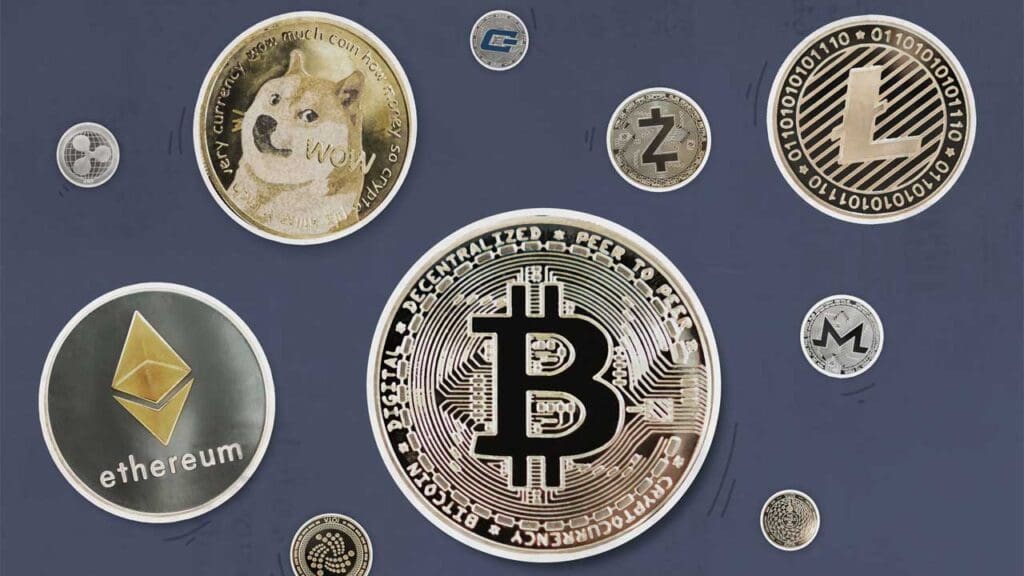Today, many people investing in digital assets believe they’re all investing in “cryptocurrencies.” However, this is a significant misconception. In this article, we’ll explore the differences between cryptocurrencies and tokens.
Crypto assets, a hot topic in recent investment discussions, are once again drawing attention with Bitcoin’s latest surge. Many individuals, aiming to safeguard their finances against inflation, turn to crypto assets, often based on recommendations from spouses and friends. Yet, a lot of them don’t fully understand what they’re investing in.
To put it bluntly, we often don’t even know the names of the assets we’re putting our money into. For many, the thousands of digital assets available today are broadly categorized as “cryptocurrency.” However, this is a considerable error within the community. The truth is, not everything you buy and sell qualifies as a cryptocurrency.
A cryptocurrency is not the same as a token.

Some of the assets traded on platforms like Binance are cryptocurrencies, while others are actually tokens. Within the community, these terms are frequently used interchangeably. Though this isn’t necessarily incorrect, cryptocurrencies and tokens, despite their similarities, differ significantly. Let’s delve into the characteristics of both cryptocurrencies and tokens.
Characteristics of cryptocurrencies:
- They operate on their dedicated blockchain network.
- They serve as a medium of exchange, essentially functioning as money.
- They exist independently, not representing any other entity or services.
- They utilize cryptography to ensure the security of the system.
- They are not governed by any central authority but are managed through code.
Yes, Bitcoin is indeed a cryptocurrency.
The characteristics outlined above notably describe Bitcoin, making it a prime example of a true cryptocurrency. Similarly, Ethereum is classified as a cryptocurrency, just like Bitcoin.
Characteristics of tokens:
- They do not possess their own blockchain network but are built upon an existing one.
- Beyond functioning as money, tokens can be utilized for various activities on their respective platforms, such as playing games, unlocking access to services, or executing DeFi (Decentralized Finance) transactions.
- Unlike Bitcoin or Ethereum, they do not feature the same level of cryptographic security.
- Tokens can be managed by an individual or an organization. In fact, you could create your own token today if you wished.
- They can be further categorized into subtypes, offering a range of functionalities and purposes.
The majority of tokens are built on the Ethereum network.
Ethereum, recognized as the world’s second-largest cryptocurrency by market capitalization, significantly facilitates the creation of tokens thanks to its architecture. Teams seeking to develop tokens predominantly choose Ethereum for this reason. For instance, fan tokens associated with football clubs are a popular application. The FC Barcelona Fan Token (BAR), linked to the Chiliz chain, which operates as one of Ethereum’s sub-chains, incorporates all the aforementioned token features.
How do we know if a crypto asset is a cryptocurrency or a token?
If you’re considering investing in a digital asset and want to determine whether it’s a cryptocurrency or a token, the simplest step is to visit the asset’s official website and review its whitepaper. If the document states that the digital asset operates on its own blockchain network, it’s classified as a cryptocurrency. Conversely, if it’s built upon another network, it’s identified as a token. This straightforward approach can help clarify the nature of the asset.
What is a whitepaper?
If you’re keen on delving into the cryptocurrency world, becoming accustomed to reading is essential. A whitepaper, or “white paper,” serves as the technical documentation for a project, akin to the detailed brochures accompanying electronic devices that outline all the specifications and features. A whitepaper provides comprehensive details about the project, facilitating a thorough understanding of what you’re considering investing in.
Editor’s Note: Prior to investing in a crypto asset, taking the time to read its whitepaper is wise. By meticulously examining the document and grasping the team’s objectives and methodology, you can assess the project’s potential, even without expert knowledge. This insight allows for informed participation in pre-sale events or long-term investment decisions. One of the most valuable pieces of advice within the cryptocurrency community is to read a project’s whitepaper.
You may also like this content
- Nigeria Sues Binance for $81.5 Billion: Here’s Why
- Nobel Economist: Bitcoin Worthless in 10 Years?
- AI Cryptos Drop 90% Since 2024

